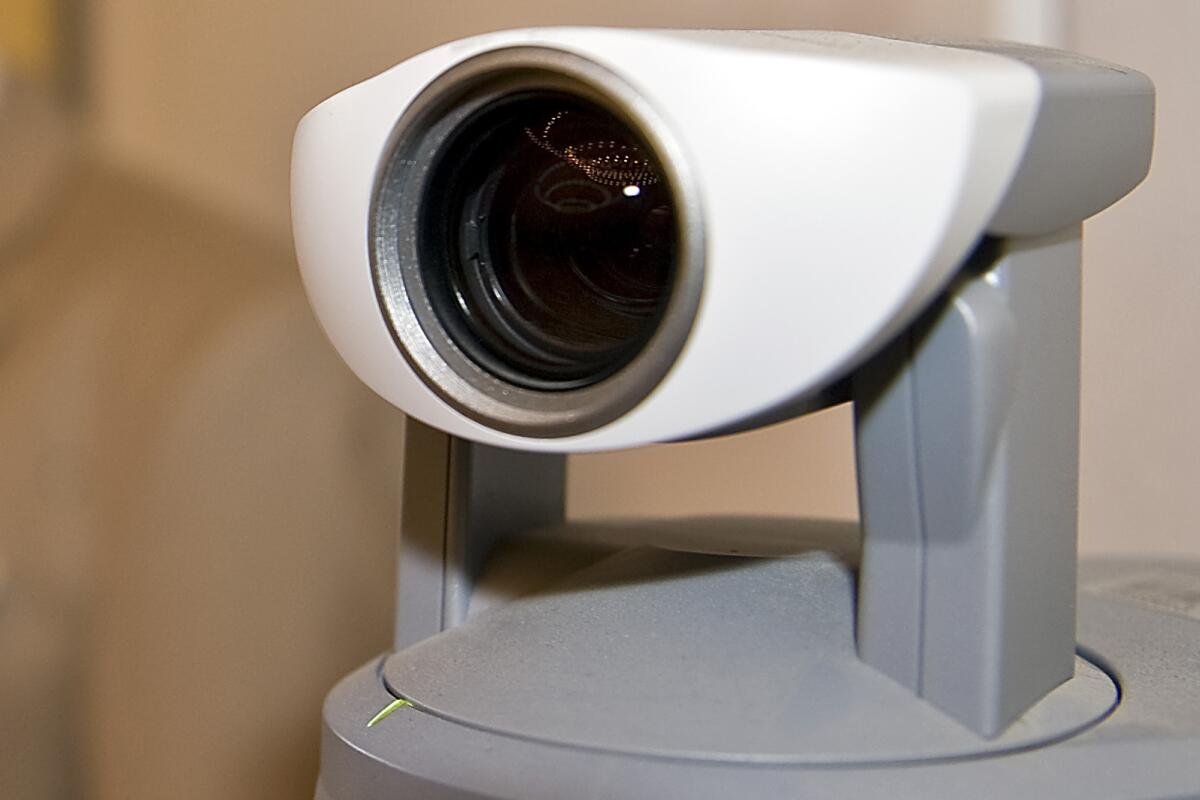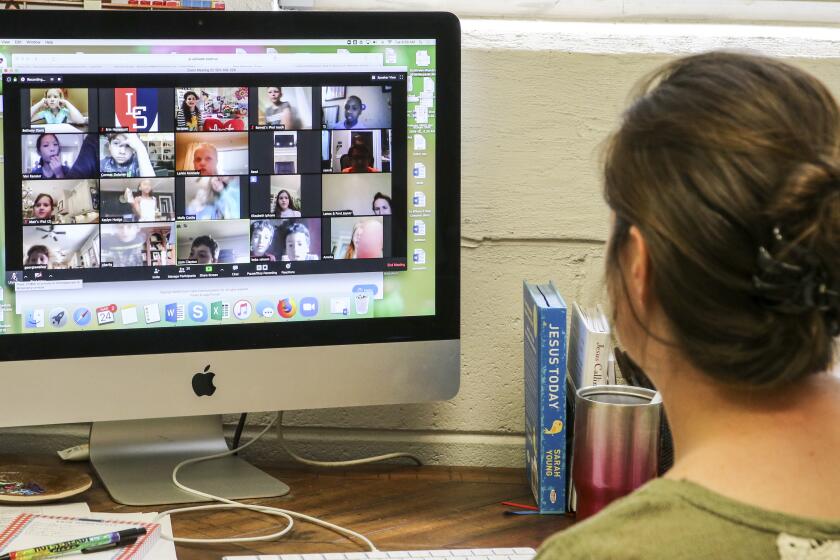Study: Remote meetings aid focus, hurt creativity

- Share via
Video meetings dampen brainstorming because we are so hyper-focused on the face in that box that we don’t let our eyes and minds wander as much, a new study found.
Staring isn’t good for creativity. Although it’s rude to stare at someone in real life, it’s expected when on a video call, researchers said.
When it comes to evaluating those new ideas, though, that focus, at least in one-on-one chats, seems to make remote meetings slightly better than in-person chats, Wednesday’s study in the journal Nature said.
Researchers watched 745 pairs of engineers in five different countries try to come up with creative ideas for using a Frisbee or bubble wrap. Those in the same room generated on average one more idea, which is about 17% more than those in remote meetings. And those in-person ideas were judged by outside experts to be more creative, the study found.
Study author Melanie Brucks, an applied psychology professor at Columbia University’s business school, said it was the outcome she expected — but not the reason she expected.
Zoom, the videoconferencing service that has exploded into the vacuum created by the COVID-19 outbreak, has endured the revelation of a string of privacy and security flaws in recent weeks. How safe is it to use the platform?
At first, she figured it had to be the social and physical distance — maybe the two people just didn’t connect as well or people didn’t know who speaks when. But several different tests for social connectedness found that the remote meeting pairs were connecting with each other in the same way as people in the same room.
Then the eyes gave it away. When Brucks tracked eye movement she found that people in the same room gazed away more often, looked around. But the remote meeting pairs didn’t.
“They were too focused on specifically the task at hand and that made them narrower in their thinking,” Brucks said — in an interview over Zoom.
This makes sense because faces draw our focus, said Georgetown University psychology professor Adam Green, who wasn’t part of the research.
“Faces really matter to our brains and we devote a lot of attention to looking at faces,” said Green, president of the Society for the Neuroscience of Creativity. “When we are with someone in person, it is not considered polite to stare directly at their face for an extended period of time.”
Remote meetings work otherwise, Brucks said.
“It’s not that Zoom’s bad, everything’s worse. It seems like [the problem] is unique to the more generative, creative process,” Brucks said.
When it was time to evaluate those options, the remote meeting engineers picked out the better choice — as judged by a team of outside experts — slightly more than those in person, the study found.
The experiment started before the pandemic and was done using Cisco’s Webex with one company in offices in Portugal, Israel, Finland, Hungary and India. The results were about the same across the different locations.
“When I brainstorm now on Zoom, I turn off my camera,” Brucks said. She notes that’s no different than talking on the telephone, except she establishes a personal connection by starting with the camera on.
More to Read
Inside the business of entertainment
The Wide Shot brings you news, analysis and insights on everything from streaming wars to production — and what it all means for the future.
You may occasionally receive promotional content from the Los Angeles Times.











